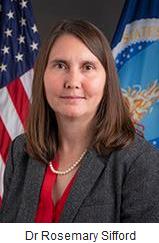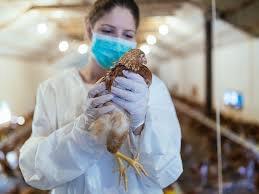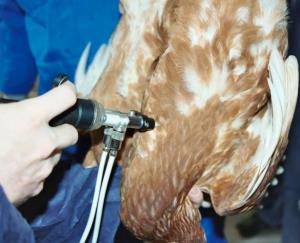It appears that the USDA, concerned over the increasing incidence rate of HPAI, is again considering vaccines. The subject was raised during the 2015 epornitic but was vigorously opposed by the broiler industry as it would have potentially impacted exports. Since this time, most importing nations have accepted the World Organization of Animal Health (OIE) principle of regionalization and vaccination. This is evidenced by the relatively limited bans placed on affected counties and in some cases entire states, following outbreaks of HPAI in commercial poultry flocks.
 In a recent interview, Dr. Rosemarie Sifford, Chief Veterinary Officer, confirmed that APHIS is evaluating the deployment of a vaccine. She indicated that it would take at least nine months to develop a “product” including laboratory testing. If a novel live H5, H7 or multivalent vaccine is contemplated the duration of development and field evaluation would extend beyond her optimistic projection.
In a recent interview, Dr. Rosemarie Sifford, Chief Veterinary Officer, confirmed that APHIS is evaluating the deployment of a vaccine. She indicated that it would take at least nine months to develop a “product” including laboratory testing. If a novel live H5, H7 or multivalent vaccine is contemplated the duration of development and field evaluation would extend beyond her optimistic projection.
If Dr. Sifford is referring to an oil-emulsion vaccine, the time required for development would be shorter than nine monthsbbut the problem will involve administration. Attempting to vaccinate 100 million or more layers, many in cages, among numerous complexes in the face of the current or a future emerging epornitic would be a difficult undertaking but feasible. It would be difficult to predict the H5 and H7 strains that should be included in an inactivated oil-emulsion HPAI vaccine that could be administered to replacement pullets in advance of an outbreak that may or may not occur.
News reports circulated by Reuters that USDA-ARS is investigating the potential for a vaccine “that could be distinguished from the wild type of virus” suggests a live vaccine. If such an immunogenic strain were to be developed, application of PCR and genotyping, would absolutely be able to distinguish between immunized and infected flocks. A suitable candidate for broilers could comprise an HVT-vectored specific AI vaccine administered in ovo similar to currently available commercial Newcastle disease and multivalent products
 If reports attributed to Dr. Sifford refer to inactivated vaccines it would denote a reversion to a 1999 approach to immunization as developed by Professor Ilaria Capua in Italy as the DIVA principle. By selecting an H7 vaccine strain with a N antigen heterologous to the prevailing field strain it was possible to distinguish between vaccinated and infected flocks applying serologic diagnostic assays available at the time. This approach to control that was effective at the time is now obsolete due to the availability of rapid lateral flow immunoassay antigen detection kits and laboratory-based PCR and genotyping technology to diagnose HPAI.
If reports attributed to Dr. Sifford refer to inactivated vaccines it would denote a reversion to a 1999 approach to immunization as developed by Professor Ilaria Capua in Italy as the DIVA principle. By selecting an H7 vaccine strain with a N antigen heterologous to the prevailing field strain it was possible to distinguish between vaccinated and infected flocks applying serologic diagnostic assays available at the time. This approach to control that was effective at the time is now obsolete due to the availability of rapid lateral flow immunoassay antigen detection kits and laboratory-based PCR and genotyping technology to diagnose HPAI.
Among obstacles that arose to vaccination during the 2015 epornitic included opposition from the broiler industry that was unaffected by the outbreak, given their location in the Southeast and along the Atlantic flyway. The geographic situation in 2022 is different from 2015 with mortality from H5N1 having occurred on broiler and turkey complexes in both the northern segments of both the Atlantic and the Mississippi Flyways. Notwithstanding, the losses sustained in the present outbreak, the broiler industry, which relies on export markets for 15 percent of volume of production, is concerned over the U.S. being regarded as endemic for HPAI. It is questioned whether there would be acceptance of any type of vaccination with extensive administration even if a suitable product for mass administration were available.
 APHIS should concentrate on the problem at hand and cease floating trial balloons. As requested, they have the obligation to rapidly process the epidemiologic questionnaires completed following the seven major HPAI outbreaks in large egg production complexes representing the majority of mortality, indemnity and financial loss. They should determine if there are any common deficiencies in either structural or operational biosecurity associated with outbreaks and to provide an interim opinion that could initiate immediate corrective action.
APHIS should concentrate on the problem at hand and cease floating trial balloons. As requested, they have the obligation to rapidly process the epidemiologic questionnaires completed following the seven major HPAI outbreaks in large egg production complexes representing the majority of mortality, indemnity and financial loss. They should determine if there are any common deficiencies in either structural or operational biosecurity associated with outbreaks and to provide an interim opinion that could initiate immediate corrective action.
As far as 2022 is concerned, vaccination is a “pie-in-the-sky” consideration. It has no practical or financial relevance to the current epornitic, or for that matter, the next outbreak, if it occurs within two years. Let us therefore determine why only a few egg-production complexes were affected over the past six weeks, analyze evident deficiencies in biosecurity and pass on the findings to as yet unaffected producers with specific suggestions to enhance biosecurity.